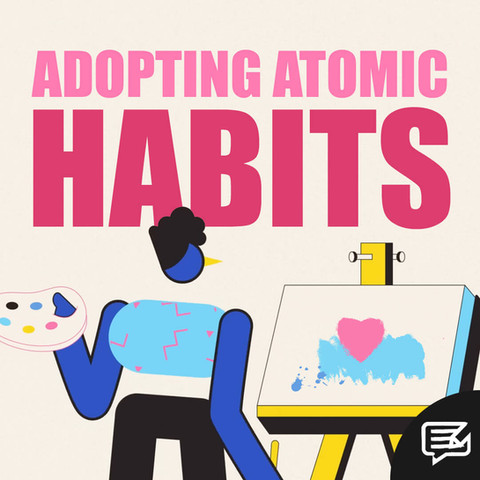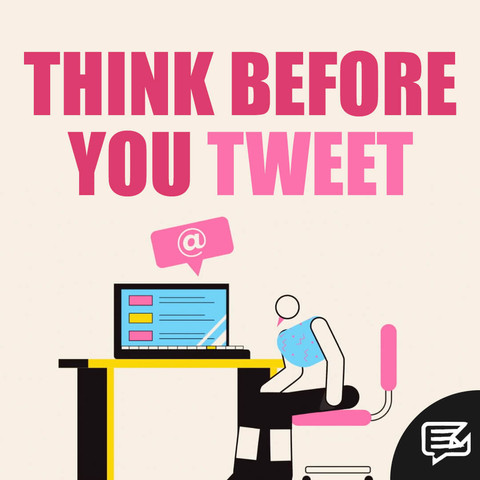
17.01.23
A NUDGE IN THE RIGHT DIRECTION?
Have you ever signed up for a free trial offer, only to find yourself still paying for it several months later? If it makes you feel any better, you’re not alone – welcome to the world of ‘nudge’.
“Few books can be said to have changed the world,” said the legendary psychologist Daniel Kahneman, “but Nudge did.”
Richard H. Thaler and Cass R. Sunstein’s book Nudge: Improving Decisions About Health, Wealth and Happiness had a huge impact following its release in 2008. Within a couple of years, Sunstein was working in President Obama’s White House, the UK government set up its own ‘nudge unit’ and the pair’s insights were being embraced around the world.



The book’s findings are still just as relevant today and in 2022 the pair published an updated version called Nudge: The Final Edition.
So, what’s the big idea? To paraphrase the title of a hit song from 1970s country rockers the Eagles, it can be summarised in three words: make it easy.
MAKING BAD DECISIONS
How long did you spend deciding what to have for breakfast this morning? I’m guessing it would’ve been no more than a couple of seconds. And it’s no wonder – according to some studies, this was just one of 35,000 decisions you will make today if you’re anything like a typical adult.
With all this decision-making experience now under our belts, you’d think that we would be pretty good at it by now, right? This is where Thaler and Sunstein see things differently. Building on the work of other behavioural science experts, like the previously mentioned Daniel Kahneman, they have conclusively shown that many of us often choose poorly.
We rely on ‘rules of thumb’ and gut feelings to make some of our decisions. This helps us to get on with our lives without having to stop and make a rational cost-benefit analysis of every single thing we do (like the kneejerk reaction to stop and smile at a new-born baby).
However, handy as this decision-making shortcut is, it leaves us exposed to various biases and fallacies in how we process and act on information. This includes things like confirmation bias – where we are more likely to seek out and agree with information that aligns to our existing views – or, the loss aversion tendency – where we attach more value to something if it is at risk of being lost than we would if it was a potential gain.
The net result is that we often make decisions which, objectively, are not best for us in the long run. We give in to temptation and often make decisions based on too little or too complex information.
One of our decision-making quirks is that we are often biased towards the present at the expense of our future selves. It’s the reason why, despite making a New Year’s resolution to be healthy, we're still partial to ordering McDonald's for lunch…
As Thaler and Sunstein put it:
“We want to stress that we are not saying that people are irrational. We avoid using that unhelpful and unkind term, and we certainly don’t think that people are dumb. Rather, the problem is that we are fallible and life is hard. If every time we went food shopping, we tried to solve the problem of choosing the very best possible combination of items to buy, we would never get out of the store.”
THE POWER OF NUDGES
Ever since the beginning of time, people have been trying to influence the choices made by others. In the past, we’ve relied on a rudimentary system of metaphorical carrots and sticks to do this.
In ‘Nudge’, Thaler and Sunstein identified a different approach. They argue that, because we now understand why people are susceptible to making bad choices, we can use these same insights to steer them to make better ones.
So, how does this work, I hear you ask? Before we get back to 1970s country rock, it’s worth pausing a moment to explain a concept that the authors call ‘choice architecture’.
Choice architecture is a way of describing the context in which people make decisions. Or, put another way, it’s all about how choices are presented to us. How these choices are framed has a significant influence on the decisions people make. As Thaler and Sunstein explain:
“There are many parallels between choice architecture and more traditional forms of architecture. A crucial parallel is that there is no such thing as a “neutral” design […] Small and apparently insignificant details can have major impacts on people’s behaviour. A good rule of thumb is to assume that everything matters. In many cases the power of these small details comes from focusing people’s attention in a particular direction.”
Shops have long been masters of choice architecture. We may enter the supermarket with a shopping list in mind, but some prominently positioned special offers will influence what’s in our trolley by the time we leave.
Once you become aware of choice architecture you’ll see it everywhere, and along with it, see how you’re being ‘nudged’ into making certain choices.
This is where we get back to Thaler and Sunstein’s three-word mantra: make it easy. Choice architects are able to steer people towards certain decisions by making a desired choice the least difficult one. After all, there’s a reason why those supermarket special offers are so easy to reach by the checkout.
Being aware of choice architecture can also help us take better control of our own internal decision-making. If I want to spend less time on Twitter, I can change my choice architecture by deleting the app from my home screen – or even keep my phone somewhere I’d need to make more effort to get to it.
NUDGE IS ALL AROUND
Thaler and Sunstein go to great lengths to argue that ‘nudges’ should only be used to steer people towards making decisions that will ultimately benefit them.
In the decade since their book was first published, there have been many examples of where governments and big organisations employed nudges to, largely, positive effect.
One of the powerful tools available to choice architects is the ‘default’ – what happens if no action is taken. Take pensions as an example. We would all agree that saving for our retirement is something we should do, but 10 years ago the UK faced a problem – millions of employees hadn’t started paying into a pension scheme. The UK government responded by make a radical change to the choice architecture. It decided that employees would now be opted into their workplace pension by default, but could still choose to opt out if they wanted to. The choice remained the same, but the ‘architecture’ was flipped. Within a year the number of UK employees enrolled in pensions leapt up from 61% to 83%.
The impact of nudge theory can also be seen in moves to position healthy foods more prominently on supermarket shelves or the helpful reminders we now receive when we try to send an email without a promised attachment, sparing us the time and embarrassment of the ‘Oops, now attached!’ follow up.
Of course, for every positive impact achieved through nudging, there are many examples of less scrupulous uses of these kinds of tactics which do not necessarily have our best interests at heart.
Want to recruit new customers? Make it easy with a one-click free trial. Want to discourage them from cancelling the service a month later? Make it as difficult as possible by putting barriers like call waiting and complex forms in the way. Thaler and Sunstein have a term for this: “sludge”.
Nevertheless, as this book successfully argues, every decision we make is framed and influenced by some form of choice architecture. It’s much better for us to be aware of this when we’re making some of our 35,000 daily decisions.
Now, where did I put those subscription details….

























































